Most sheep and wool festivals take place in the spring and fall during shearing time. I enjoy visiting them with my family, getting inspired for new projects, shopping for fleeces, and seeing all the creative artisan talent in my community.
Here are some highlights from my visit to the Connecticut Sheep, Wool & Fiber Festival a couple of weekends ago. I’ve been going to this festival for several years. It’s on the smaller side, but I always run into people that I know and that’s fun.
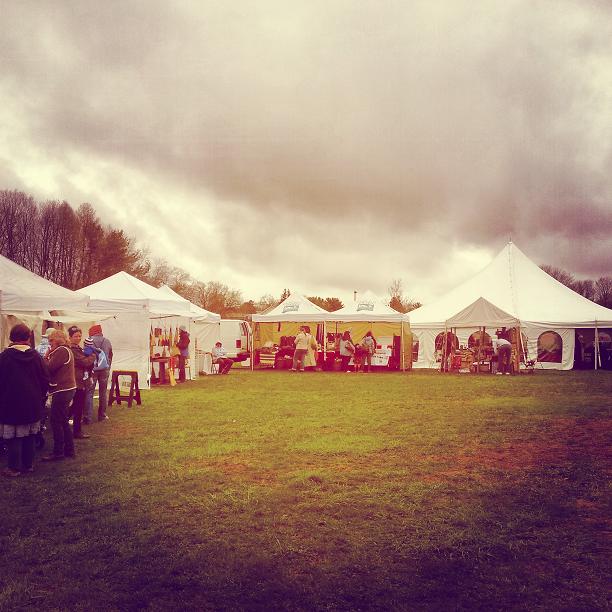
The Connecticut Sheep, Wool & Fiber Festival
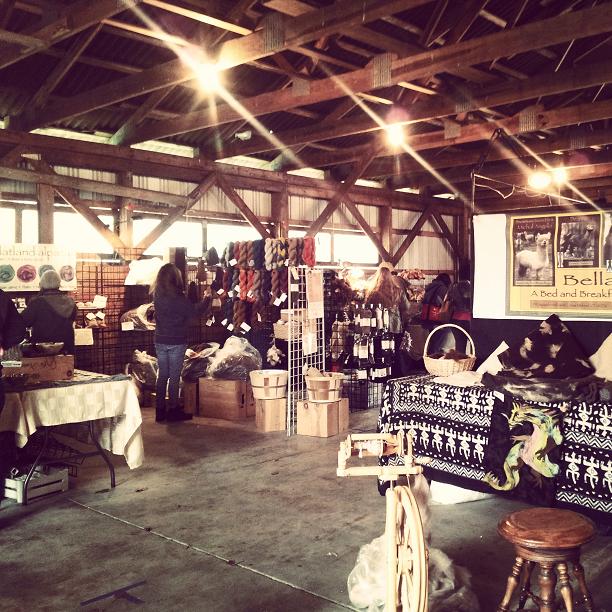
Some of the vendors
Although the day was drizzly and damp, all the booths were in brightly lit barns, which gave it a cozy atmosphere. Two barns were full of every fiber art you could imagine: yarns, fibers, wheels, looms, woven projects, knitwear, patterns, handspun, handcrafted drop spindles, dyed wool locks and more! I love walking around these booths and getting ideas for what I would like to work on this year.

National Custom Spinworks spinning wheel
In The Sheep Shoppe booth, I saw a brand new spinning wheel I had never seen before. It is called a National Custom Spinworks, and is made of solid metal. I even got to test drive it! This wheel was the 18th manufactured in the world, and reminded me of a Lendrum — with a bulkier flyer. If you are in the market for a spinning wheel. you can often test drive several options at local sheep and wool festivals. This is a great resource in finding a wheel that feels right for you.
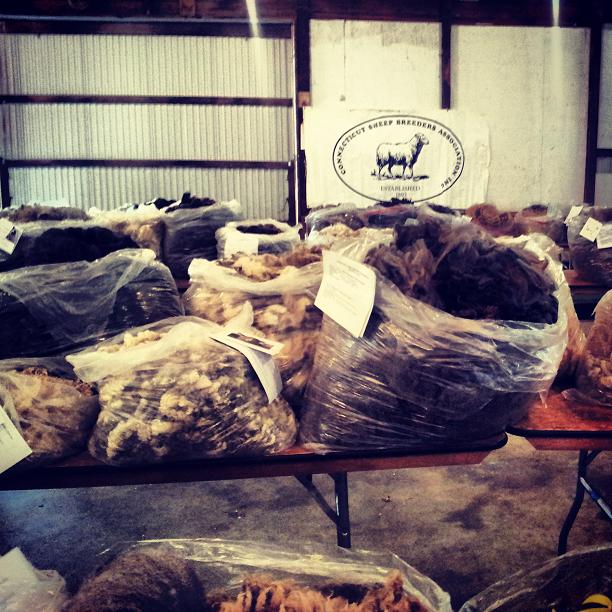
Bags of locally grown wool fleece for sale
After I visited the first barn full of vendors, I went to the second barn, which featured fiber animals for sale and bags of wool and goat fleece for sale. One of my favorite things about shopping at a fiber festival is that many shepherds include a picture of the sheep who grew the fleece with the wool.
After shopping through the incredibly varied selection, I chose a Shetland fleece for my art yarns. As I was paying, a kind older man came up to me and peeked in my bag. “Do you like it?” he asked. “Yes it’s beautiful!” I replied. I asked if he was the shepherd, and he was! I chatted with him about his flock. He told me he priced his wools to cover the cost of the flock’s winter hay, as they are out on green grass pasture all day. It is so endearing to meet the farmers who work every day to grow the wool that we handspinners, felters and artisans enjoy using.

Sheep enjoying the attention
Also in the animal barn were several sheep, alpacas, llamas and rabbits for children to pet and touch. There was live music and crafts for children, from needle felting to mini looms.
In another barn several people were dressed in period attire from the 1500s and were doing needlework and fiber art demonstrations. They answered questions as if they were from the 1500s and families could bring their children around to learn about what it was like to work with wool 500 years ago.
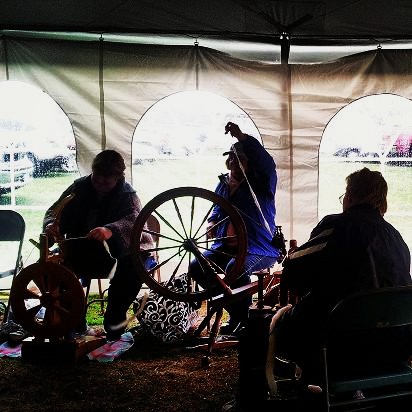
A spinning circle of spinners using different types of wheels
In another barn was a spinning demonstration, where a group of spinners were in a circle spinning away. I found that these circles are the best places to ask about buying a wheel (if you are shopping for one). Asking these artisans why they purchased the wheel they are spinning on, what yarns they prefer spinning and what wheels they would recommend is such a fantastic resource when you’re wanting to learn how to spin yarn.
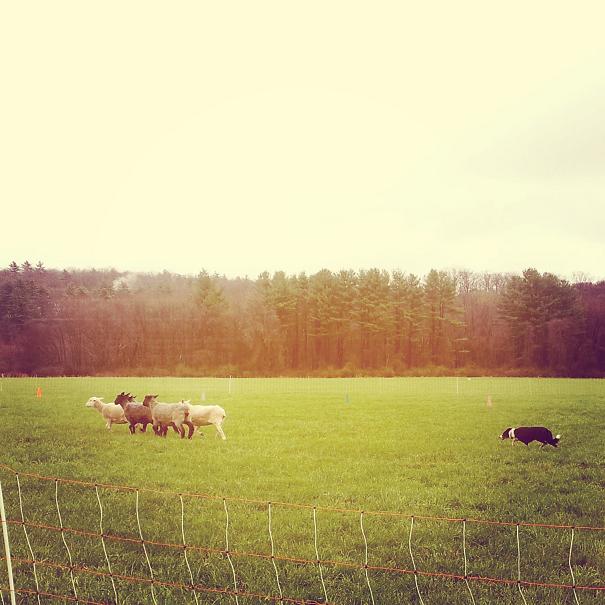
Sheep dog demonstration
And last, but not least, there was a sheep dog demonstration where a shepherdess used a whistle and commands to direct her Border collie around a small flock of sheep. The collie expertly brought the sheep to the back of the pasture, around cones and back to the shepherdess. This is a great place to sit and picnic while you think about all the creative ideas you’ve seen, what items you may return to purchase, and show off your finds to your friends and family.
To locate a sheep and wool festival in your area, see this roundup of 2014 fiber festivals on Knitter’s Review.

Is anyone available to update this page and the list of fiber festivals?